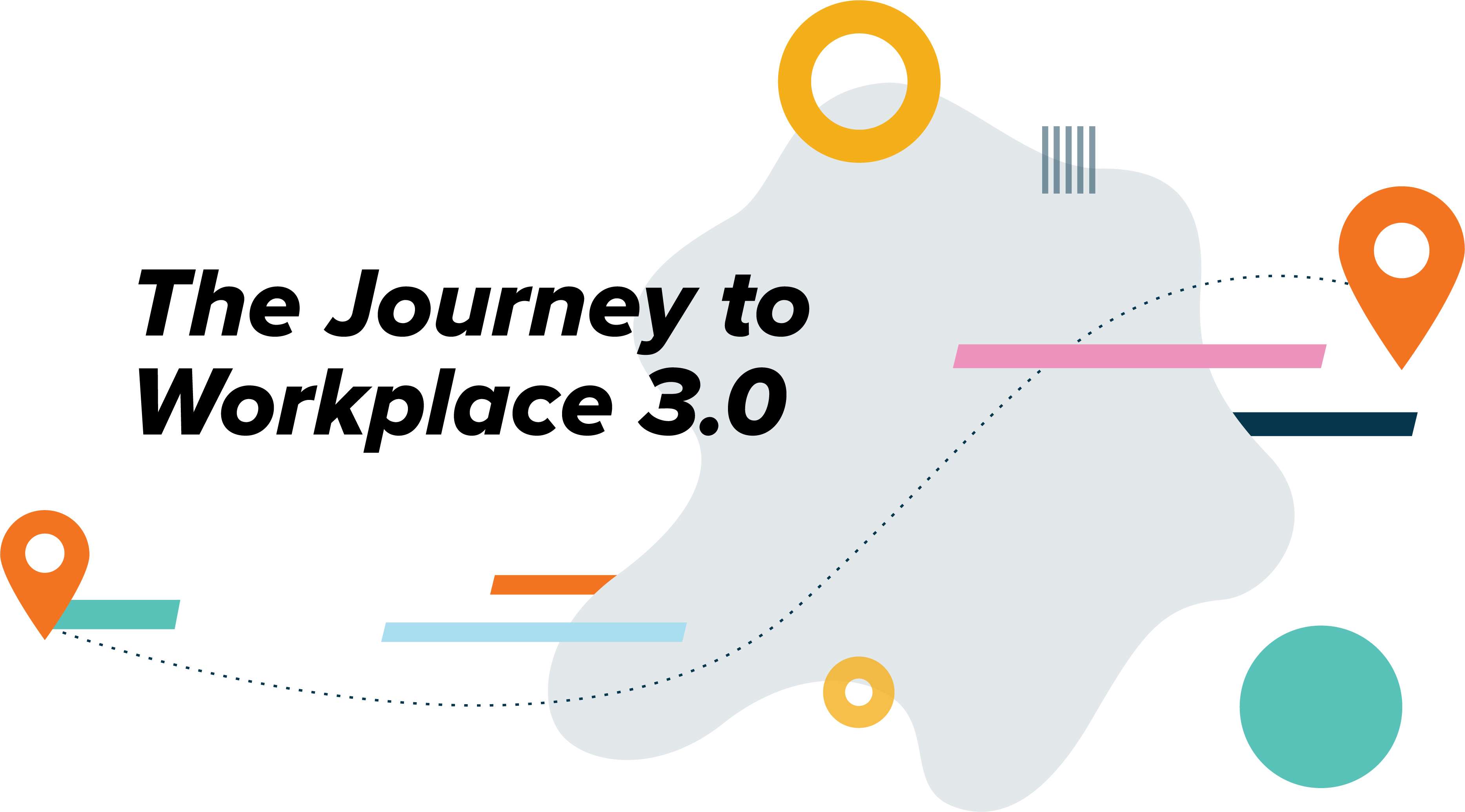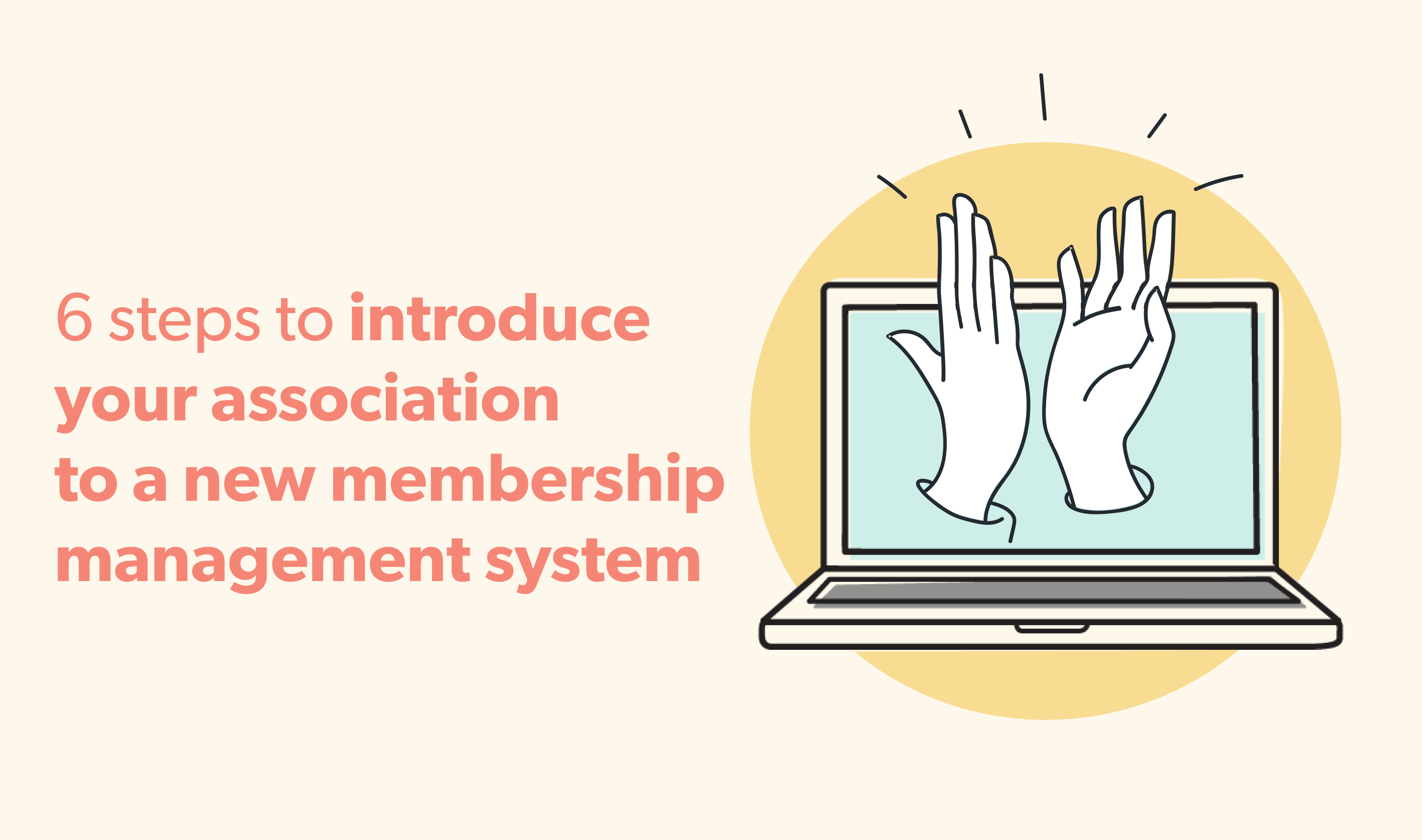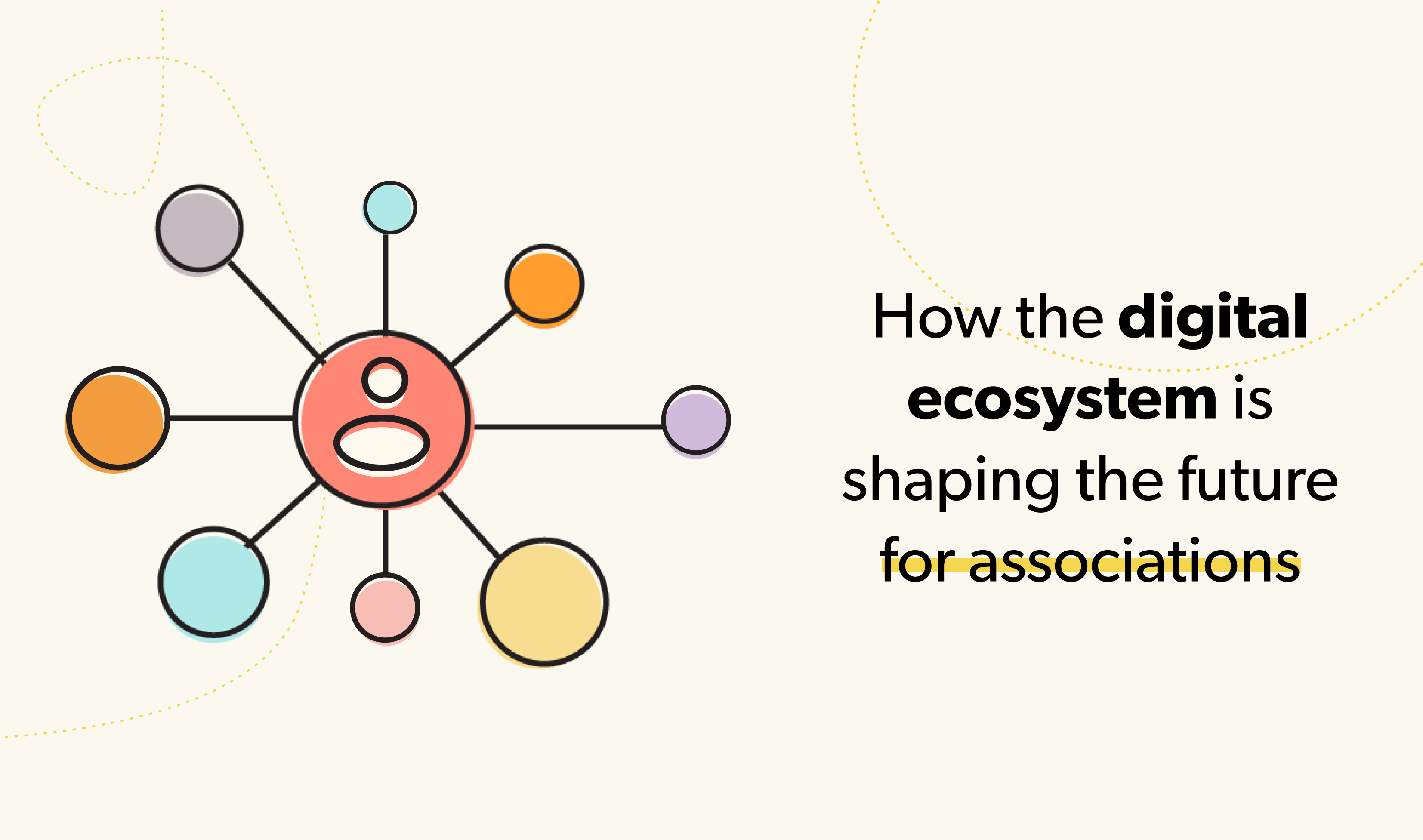The Future Workplace of Associations

What does the workplace of the future look like for associations? And how will the role of association staff change as advancements in technology continue at an unprecedented pace? There has been talk within the sector about jobs being replaced by artificial intelligence, so are the robots coming? And if so, what does this mean for associations?!
The truth is, no one truly knows exactly what the future holds. What we do however know is the prominent importance of associations, they are a vital part of our economic prosperity. While technology is changing how businesses operate, associations should be no exception. Every corner of an association’s business should be impacted by technology: human resources, finance, operations, communications, and member engagement. So, how can we begin embracing technology to build for the long term?
The first step, in our opinion, is facilitating a conversation within our community around how associations can embrace data and technology. On April 30th, 2019 at The Shift, our panel of experts identified how we – together – can embrace the 4th industrial revolution and roadmap our way to success for the association sector.
Embracing the 4th Industrial Revolution
What does the future of the workplace look like?
At The Shift: Journey to Workplace 3.0, Margo Crawford, President and CEO, Business Sherpa Group, identified three major drivers which present change in the future of the workplace: the shift in the labour market; technology and it’s adoption within your organization; and shared data and information.
What do employees want?
The average career length is growing, baby boomers ages 60-70 are continuing to work past retirement. On the other end of the demographic spectrum the younger generations – millennials and gen x’ers – have a shorter tenure when it comes to employment, spending approximately 4-5 years on average in a position before moving on.

In summary, people are staying in the workforce longer into their lives, but are also spending less time dedicated to one particular placement, why is this? What’s caused this shift in the labour market?
People are looking for more flexible, diverse workplaces that focus on quality of life. Hence the shift towards virtualization. This concept may seem scary. Remote, virtualized workplaces are packed with complex issues. So, together let’s unpack some of the fears you may have around the future of the workplace.
As we shift towards remote employment, office dynamics will vastly alter. Employees may work at multiple small offices or collaborative workspaces your organization may provide, alternatively all employees may choose to work from the comfort of their own home. There are many ways in which employees can work remotely; coffee shops, on their couch, in cohabitating workspaces, the list goes on! The important question to pose when determining what level of virtualization your organization is going to offer is around evaluating operational needs and growth opportunities.

What are the benefits of a virtualized workplace?
Growing your member network and niche community
This shift in the labour market will allow you to spread your organization’s network among multiple geographic locations. What does that mean? And why is it a benefit? Your members may exist all over North America, or the world if you’re a large association. Traditionally your organization will have a headquarters in a strategic city… perhaps close to the federal, provincial/state, or municipal government, and perhaps you have smaller satellite offices in other key geographic areas. Now, you can have a collective group of employees, volunteers, and board members from… well, everywhere and anywhere! The future of the workplace offers exponential external growth among your community to enable your association to grow your network.
Greater reach for talent acquisition
Virtualized workplaces open up the opportunity for skilled diversification within your association’s team through geographic talent acquisition. Meaning, you can grow your team, seeking the top talent that the country – or world for that matter – has to offer. The flexibility of the future doesn’t stop there. Your association can hire off-payroll members for part-time or flexible business hours based on your organization’s needs! On-demand specialists can provide fresh eyes on projects, and problems your association may need outside perspectives on.
What does a virtualized workplace mean for my association?
Along with the shift in the labour market, your organization will need to adopt and adapt to new technologies to become operationally effective, prosper financially, and continue to deepen your impact. The combination of technology platforms, connected communities, and sharing economies are creating disruption. For associations to survive, we need to continually adapt and adopt new technologies, processes and even business models.
The future of the workplace means shifting your organization’s mindset towards a culture that embraces technology. The present day we live in already has a heavy reliance on technology for routine workflow activities and efficiencies, shared data and information, and creating strong connections with our niche networks. Don’t be left behind. Be a trailblazer at your association by “expanding your thinking and begin to envision the future of how your organization could operate using new models, processes and technologies,” says Margo Crawford, President and CEO, Business Sherpa Group.
Leveraging Technology to Create Operational Efficiencies
Fine-tuning your accounting workflow for the future
Business Sherpa Group creates operational efficiencies for their clients through their innovative virtual services. Brandon Brown, Accounting Associate, CPA, provided attendees with practical advice on how to leverage technology to improve back-end accounting operations.
Technology is something we all need to adopt and adapt. Accounting shouldn’t be left behind when it comes to creating operational efficiencies at your organization when leveraging technology. As organizations shift their mindset around data and technology, so is your accounting department.

“We’re seeing accounting move away from waiting for month-end to reconcile, instead your organization can implement continuous accounting – conducting accounting activities in real time,” Brandon mentions.
So, what are the benefits of continuous accounting?
All aspects of your accounting department – and organization as a whole – can benefit from continuous accounting. Activities such as data collection, processing, and management are areas where significant time savings can be had if you embrace technology! It’s truly about shifting your organization’s mindset to a do it now instead of I’ll do it later attitude.
Something as simple as making it standard practice for your organization’s executive staff to upload their receipt to an app right away instead of collecting a pile of receipts makes a huge difference. Think of how many receipts you’ve lost in the past? Imagine if you instead took two seconds to upload a photo of your receipt while it’s fresh on your mind? Technology can significantly improve your organization’s efficiency and operational effectiveness. With the shift towards embracing, adopting and adapting with and to technology, you’ll also see a shift in company culture. Technology will take strenuous activities off the plate’s of your staff to allow them to focus on the quality of their work.

What technology can I implement to create efficiencies within my organization?
Hubdoc helps you place all of your key financial docs in one place, automatically. Say goodbye to chasing documents and data entry. Say hello to increased productivity! Hubdoc enables your organization to automatically import all financial documents and connect them to other software such as your accounting system.
How does Hubdoc work? You simply take a photo of your receipt, invoice or bill with the Hubdoc’s mobile app and recycle the paper copy. Hubdoc scans, extracts and stores your documents. If you’ve already scanned your receipts, invoices, statements or bills, you can upload them directly to Hubdoc and they’ll extract the key data you need.
Additionally, Hubdoc connects with your email address – allowing your email to link to Hubdoc, creates an efficient way of transferring data from email storage to Hubdoc’s safe, secure document hub! Once you email your documents in, there’s nothing else you need to do, Hubdoc does the work for you.
Side note: Hubdoc was founded in Toronto and were recently acquired – a real Canadian success story!
Another great tool to create operational efficiencies within your organization’s accounting department is Plooto. Plooto allows you to pay your vendors and collect money from clients with simple, cost-effective technology. For bill payment processing, Plooto is a go-to platform for managing A/R and A/P, streamlines your monthly bank reconciliation and bill payments.
Choosing software platforms that are cloud-based is key to continuous accounting – starting with your accounting software itself. Quickbooks Online, Xero, and SageOne are all viable options to look into.
It’s small changes that make a big difference. Implementing continuous accounting practices in your organization today will improve operations and improve the quality of data when reporting down the road. “It’s vital to your business’ survival to understand how to execute critical back office functions using innovative technology to taking tasks from hours to minutes. Embrace the right technology to create operational efficiency!” Brandon Brown, Accounting Associate, CPA, Business Sherpa Group
The Power of a Roadmap
Introducing Technology into every aspect of your Organization’s Operations
Karen Mason, VP of Operations, Business Sherpa Group identified how associations can thoughtfully build technology into their operations. Roadmapping your operations processes and how each department touches each piece of software will define what types of changes you should make internally to your operations.
Talking about the future is nerve racking because it’s often discussing the unknown – the unpredictable. What we can guarantee is that technology is here to stay. It is going to continue to create efficiencies at a rapid pace – meaning our organizations will need to implement new business models, processes and tools to our operations.

With technology decisions and implementations, you need to slow down in order to go fast. Take a deep breathe. Success and sustainability require a good strategy. When you’re building your association for the long term, roadmapping should be included in your annual and quarterly business reviews. And you should never ignore the importance and effectiveness technology provides when roadmapping your association’s future.

How do I build a Technology Roadmap?
The first step is to decide, as an organization, to plan for the future. Your team will work through problems and build solutions in carving out your sustainability strategy. If possible, book a full day brainstorming session. Ensure you have an agenda with time limits. Identify overarching segments for the day and stick to your schedule to ensure you maximize everyone’s time.
As part of your planning or brainstorming session, ask some of these key questions:
- What are our strategic priorities?
- Which priorities involve technology?
- What is our #1 priority?
- How much can we afford this year?
- How much will it cost if we do nothing?
As you answer these questions, use swimlanes to map technology across your business departments, and their unique operations. In the same session, remember to ask:
- How does the technology / process touch each department?
- How many software tools are each department being exposed to?
When you’ve walked away from the day and have a list of your organization’s processes, needs, core functionality, and current technology, you’ll be anxious to start finding the solution. Be sure to research, consult, and implement the change you’ve agreed upon as an organization.
You can leverage tools like G2 Crowd to learn about software categories and read reviews to help round out your knowledge around potential software solutions.
“Stimulate your thinking on how to create a technology roadmap to guide your investments and decision making. Use the 80/20 rule. Find a software tool that does 80% of what you need, and adapt your processes to cover the other 20%.” Karen Mason, VP of Operations, Business Sherpa Group
Virtualizing your Workplace
The lessons learned from CMC Canada virtualizing their workplace
Michael Brennan, Executive Director at Canadian Association of Management Consultants (CMC Canada) and his team recently virtualized their association. Here are the lessons Michael and his team learned from virtualizing their workplace.
Why Virtualize?
What better reason to virtualize your office, beyond budget? There are many additional reasons you should virtualize your workplace, including growing your organization’s network, diversifying your talent pool, increasing the quality of life of your employees, and potentially even finding operational efficiencies.
Where do I Start?

Making the decision to go virtual needs buy-in from staff. Engage with your staff on the vision, include other stakeholders such as components, and the board in on the conversation. Collectively, identify the benefits and opportunities virtualization presents.
There will be many questions and concerns, therefore if you’re the trailblazer within your organization, ensure you’ve done your homework to be able to answer as many of these questions as possible. Find case studies to identify solutions to any of your involved party’s concerns. Additionally, identify that the transition to go virtual will be a gradual process, and that you’ll all work together as a team to work through the challenges.

What technology and tools should we use?
There are obvious technical solutions that you’ll need, and are likely already using. Note that your organization as a whole will need to adopt and adapt to learning new technologies. Overall, your organization’s shift to evolve with these tools will strengthen your power to engage with each other, your network, and furthermore, your members!
Here are some of the tools that you’re likely already using, and are key to a virtual office:
- Online collaboration, like Slack or Microsoft Teams
- Cloud file storage like Dropbox, G Suite, or Microsoft OneDrive
- VOIP phone system like Versature
- Video conferencing system like Zoom
“For every aspect of your operations there is a software solution available and ready. The challenge is choosing the one that fits your business best. Do your research, identify budget, begin onboarding and then integrate!” Michael Brennan, Executive Director, Canadian Association of Management Consultants
What other hurdles did CMC-Canada overcome?
Less obvious things you’ll need to consider when virtualizing your workplace will be identifying an archiving solution – what to do with all that old, but important, “stuff?” A detailed plan for the move to virtual is key to success… you’ll be surprised how much junk you’ve built up over the years at your physical office. If there are items of value, you cannot digitalize look into a physical storage space.
A print-on-demand service like TPH will assist your team with all printing needs, as each employee will not need a full printer bought and put in their home office space. When building your technology roadmap identify what printing needs are required from which teams and work with those departments to verse them in print-on-demand services available virtually to them.
A mail service for opening and digitizing your mail like Regus is something else to consider when you no longer have a physical address. If you have not digitized your mail service already, Regus is an incredible solution!
Think of an ad hoc office space for bringing your team together. Although your team is virtualizing, human connection is still very important. Identify how and when you can get the team together in person such as planned quarterly staff meetings, holiday parties, anniversaries, etc. Additionally, considering a co-working space where employees in the same location can meet up to work together if they’d like to co-work together!

How to shift your culture with virtualization.
Policies will need to be created and many revised. Some of the key policies that CMC Canada changed included:
- Dress code
- Video call protocols (video calls are VIDEO calls)
- Weekly check-ins
- Quarterly in-person staff meetings
When will I know I’ve made the right decision?
The positives so far for CMC Canada? The opportunity to have access to a national hiring pool! CMC Canada has been able to seek talent beyond where the office space was located which has been an incredible advantage. Additionally, local reach – staff on the ground in communities across the country!
Staff morale has increased! No more commuting allows CMC Canada’s staff to have a better quality of life. They can spend time with their family, friends, and pets before and after work, rather than being stuck in traffic on their commute! Staff are also able to enjoy extracurricular activities that otherwise they were pressed for time to attend.
And while it’s still early in their transition to a virtual office, CMC Canada has seen a productivity boost among staff. The virtualized office space has made teams more efficient. With the adoption of technology, employees can learn how to do their job in an effective way.
And of course, budget savings has been a huge advantage for CMC Canada.
The future of the workplace is changing, and through these amazing presentations at The Shift we discovered what that future may look like, some practical tips for automating your accounting practice, how to build a roadmap for technology adoption, and how with today’s technology, virtualization of your workplace is now a reality.
Technology is ever changing, is unavoidable, and associations need to embrace it to continue to prosper and deliver their valuable mandates. Whether you are seeking efficiencies for your staff, looking to increase member engagement, or find new ways to collaborate and connect, there are technology solutions available today that can help you get there!




